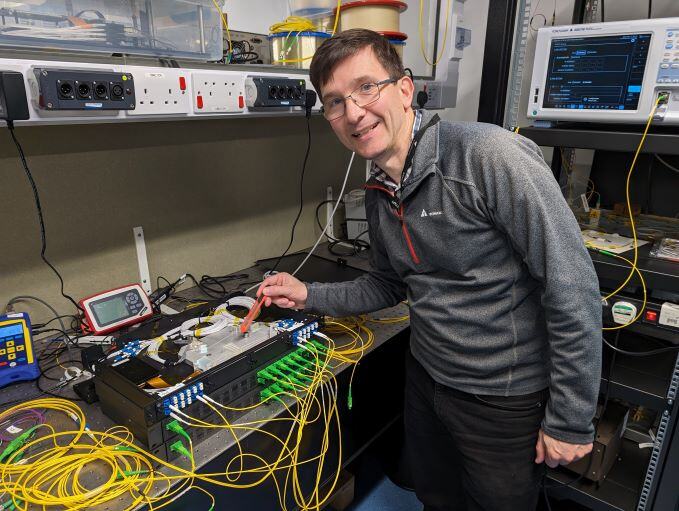
Researchers have broken the current broadband speed record with a new development that allows data delivery up to 4.5 million times faster than currently possible. And they achieved it using standard fiber optic cables.
The new research, which took place at Aston University in Birmingham UK in conjunction with Nokia Bell Labs and the National Institute of Information and Communications Technology in Japan, sought to find out if current fibre optic broadband was being under utilised, and the results that they discovered could revolutionise the way we use broadband, without the need for any major new cable infrastructure.
So, how on earth is it possible to transmit data 4.5 million times faster than is currently possible, using the same cable? It all comes down to light wavelength bands. Currently, the number of wavelength bands that are transmitted via fibre optic cables are restricted. By opening up the number of wavelength bands used, the team were able to achieve record breaking new speeds.
Conventional fibre optic data transmission takes place using the C and L bands, which correspond to Conventional (1530–1565 nm wavelength range) and Long Wavelength (1565–1625 nm) respectively. The new research utilised two additional bands, S (Short Wavelength 1460–1530 nm) and and E (Extended 1360–1460 nm), which are not normally used for such purposes.
Dr Ian Phillips, who helped lead the team said in a statement, "Such bands traditionally haven’t been required because the C- and L-bands could deliver the required capacity to meet consumer needs."
New optical amplifiers
Utilising the new bands wasn't just a case of transmitting them down a cable. New optical amplifiers for the purpose. Dr Ian Phillips continued, "Over the last few years Aston University has been developing optical amplifiers that operate in the E-band, which sits adjacent to the C-band in the electromagnetic spectrum but is about three times wider. Before the development of our device, no one had been able to properly emulate the E-band channels in a controlled way.”

Dr Ian Phillips with the new wavelength management device. Image: Aston University
Co-lead, Professor Wladek Forysiak added, "Growing system capacity by using more of the available spectrum - not just the conventional C-band but also other bands such as the L, S and now E-bands can help to keep the cost of providing this bandwidth down."
The importance of developments like this cannot be understated. The data demands that we place on the internet are only getting larger, and the types of applications that we are now using are demanding ever decreasing latency. When it comes to technological advancement and progression, increased speeds are one big defining factor.
From even more responsive AI chat systems, to making true zero latency cloud based video editing at high resolutions possible, and in fact reliable cloud computing in general, this is a significant development. Of course, performing the feat in a lab is one thing, and is wholly different from rolling out such a system into the commercial sphere. But, the fact that speeds like this are now possible using existing cable infrastructure means that we have a long way to go before hitting a data transmission speed brick wall. In fact, further down the road, this could be one of the most significant developments in a very long time.
Tl;dr Cheat sheet
- Research at Aston University, in collaboration with Nokia Bell Labs and Japan's National Institute of Information and Communications Technology, has found ways to drastically increase data transmission speeds without new infrastructure.
- By expanding the number of light wavelength bands used in fibre optic cables beyond the conventional, the team achieved data transmission speeds 4.5 million times faster than current capabilities.
- This breakthrough holds potential for significantly enhancing internet speed and capacity, addressing growing data demands, and enabling advanced applications like responsive AI, zero latency cloud computing, and high-resolution cloud-based video editing.
Tags: Technology


Comments